Bus Drivers
During the 2020 uprisings, Adam Burch, a city bus driver in Minneapolis, heard that the police were looking for a bus to transport arrested protesters to jail. Burch, a member of the Amalgamated Transit Union (ATU) Local 1005, which represents Minneapolis bus drivers, decided to publicly refuse to participate.
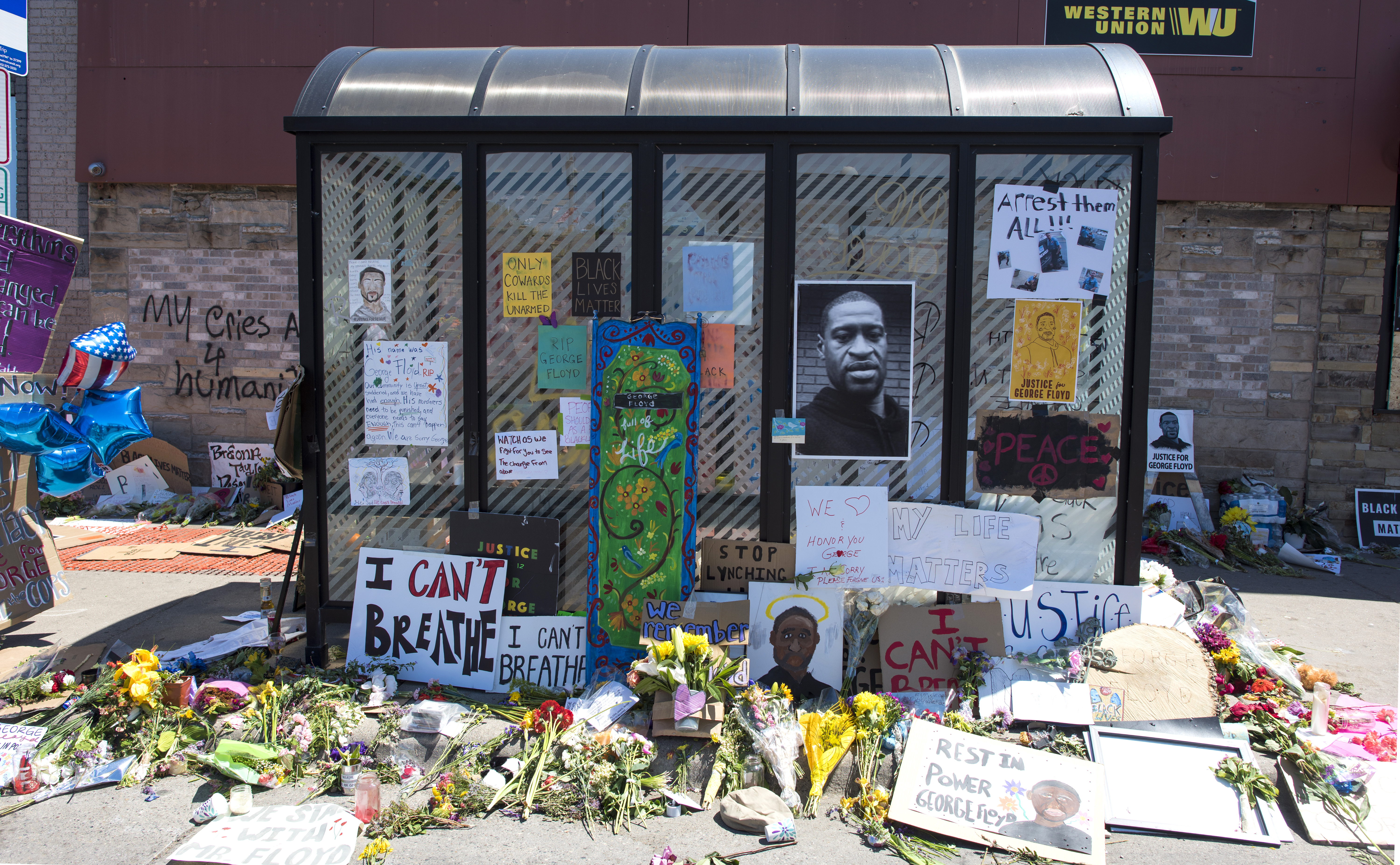
George Floyd memorial at Chicago Avenue & 38th Street in Minneapolis, Minnesota. Image via Fibonacci Blue/Flickr.
In a Facebook post that immediately went viral, he declared: “I refuse to transport my class and radical youth. An injury to one is an injury to all. The police murdered George Floyd and the protest against is completely justified and should continue until their demands are met.”
The following day, ATU’s local union representing Minneapolis bus drivers published its own response: “ATU members face racism daily,” the union said in a letter. “Our members live and work in the neighborhoods where actions like this happen, and where this took place, now watched in horror across the globe. At ATU we have a saying: ‘NOT ONE MORE” when dealing with driver assaults, which in some cases have led to members being murdered while doing their job. We say, ‘NOT ONE MORE’ execution of a black life by the hands of the police.”
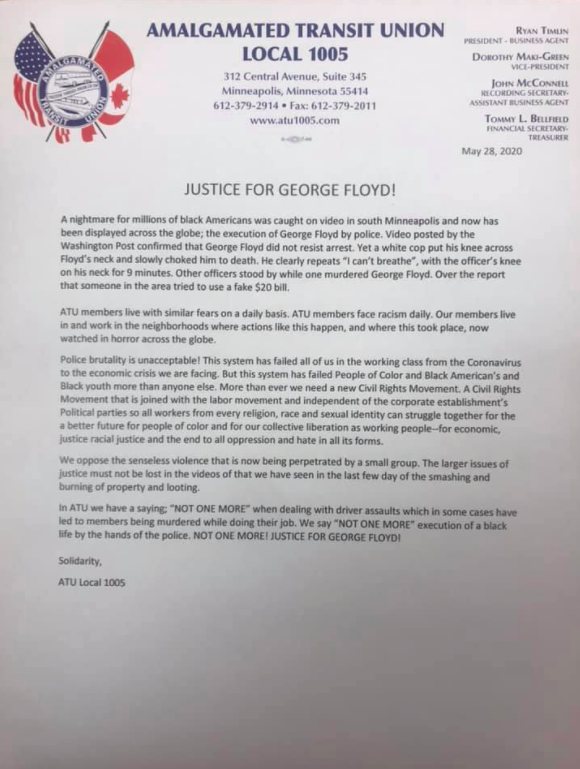
Justice For George Floyd letter by the Amalgamated Transit Union. Image via ATU Local 1005/Facebook.
Burch’s refusal was also backed by the union’s international umbrella organization, which stated that ATU members have a right to refuse “the dangerous duty” of transporting protesters “away from these communities where many of these drivers live” as well as the right to refuse transporting police to the demonstrations themselves. “This is a misuse of public transit,” ATU President John Costa said.
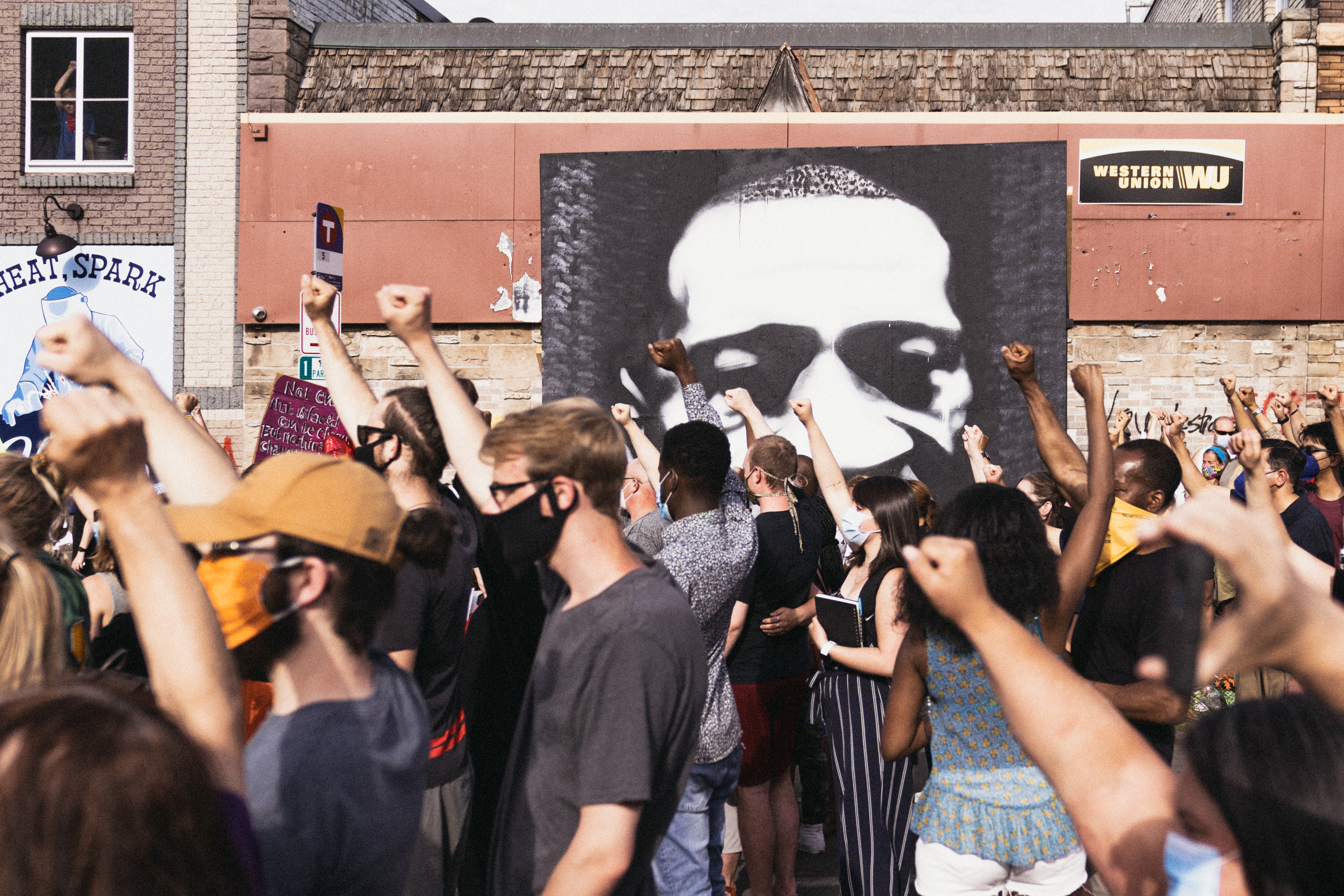
Nearby the George Floyd Memorial at Chicago Ave & E 38th St in Minneapolis, Minnesota on Thursday evening following his memorial service. A painting of Floyd by Peyton Scott Russell in the background. Image via Lorie Shaull/Flickr.
Prohibited by law from initiating a wildcat strike, transit workers, including Burch, launched a group called “Union Members for #JusticeForGeorgeFloyd.” As of July 2020, the group’s Facebook group provides a forum for its 8,400 members to take “the struggle for racial justice and economic equality into their unions, at every level.” The group asks its members to sign a petition pledging “to do what we can to ensure our labor is not used to help the Minneapolis Police Department shut down calls for justice.” The petition is available to be signed by all union members, not just bus drivers.
LA Teacher's Strike
Since the 2012 Chicago teacher’s strike, many teachers unions have bargained not only for themselves but for the common good. Most recently, the Los Angeles Unified School District teachers and their union, United Teachers Los Angeles (UTLA) led a historic strike that ended in January 2019. Their focus was not just to get better wages, but to improve the quality of public education for their students, parents and their neighborhoods.
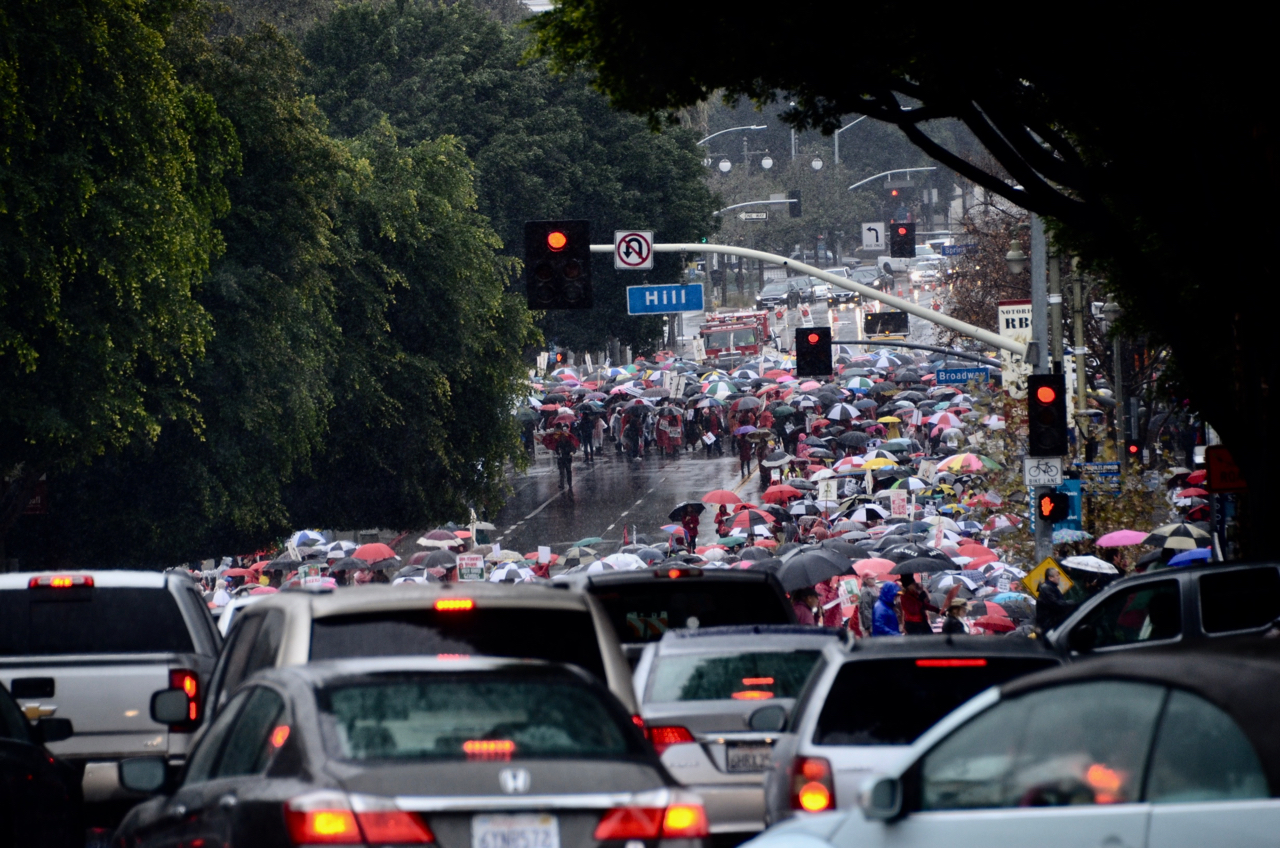
UTLA teachers march on downtown Los Angeles, on the first day of the 2019 strike. Image via Mike Chickey.
As one commentator described, UTLA members “were swimming against the tide as unions narrowed their focus and tried to stay alive by avoiding risks. The teachers instead wanted their union to aim higher, to build power in the workplace and the larger community.”
Educators came together with parents, students, school staff, and community organizations to develop a shared vision for what needed to change. The teachers did not simply build a short-term coalition in anticipation for a strike, but aimed for deep alignment that could sustain long-term mobilization. UTLA tried to build deep and authentic relationships with parents and communities. For example, parents themselves worked as organizers for the teacher’s union. And many of the teachers behind the movement identified with their students’ parents, and connected over a shared history of Latinx struggles in Los Angeles. As one teacher-member explained, “I see myself in my students in both the literal and metaphorical sense.”
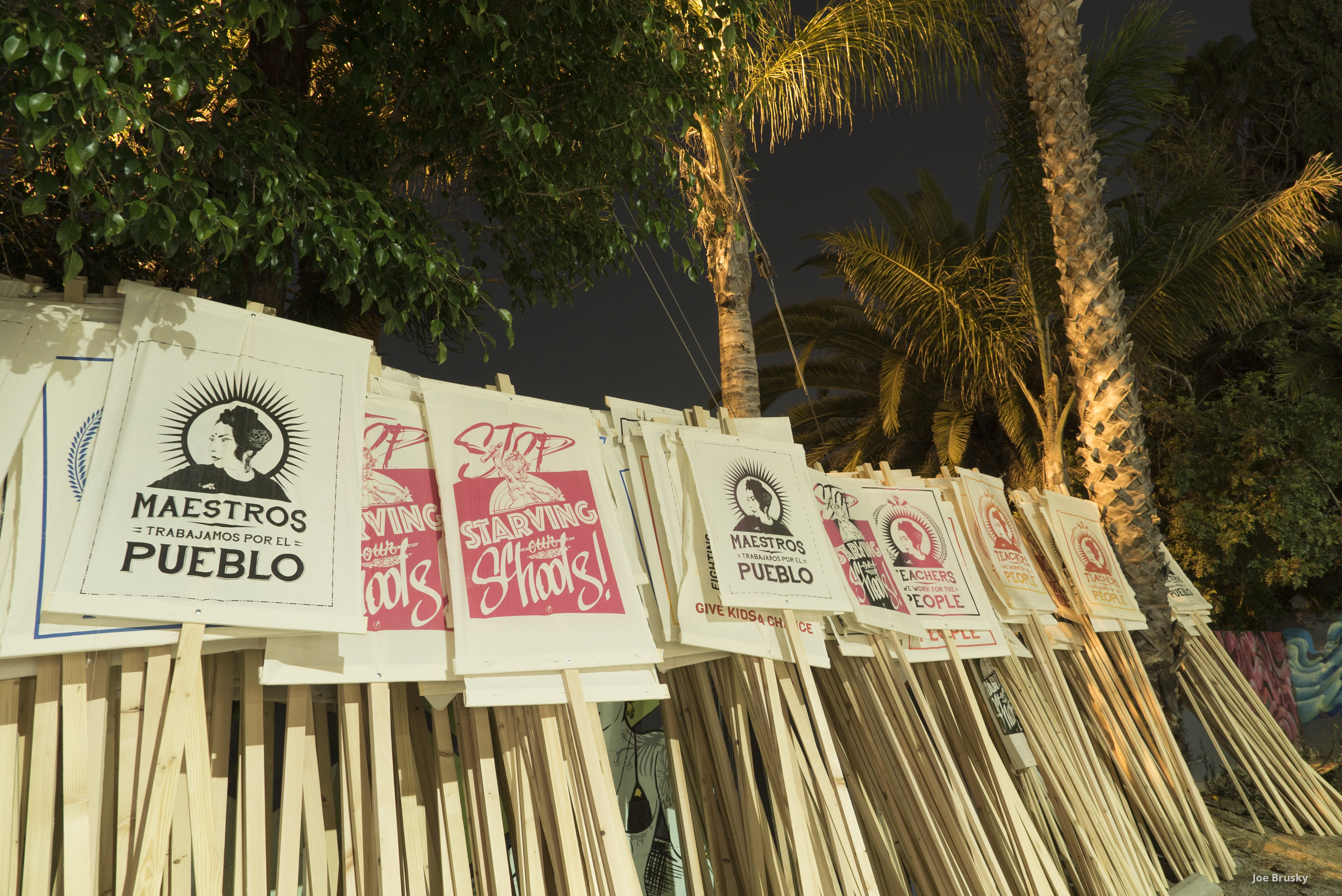
“LA Art Build to Win Public Schools Students Deserve” action by the teachers’ union of the educators of the Milwaukee Public School district. Image via Milwaukee Teachers’ Education Association (MTEA)/Flickr.
When UTLA prepared to go on strike, their demands were crafted democratically, and in partnership with the community. As a result, when UTLA went on strike, a much larger community — parents, students, neighborhood members, community based organizations — mobilized to lend support to the picket line. With this support, built on long term deep organizing, the union leadership had the mandate to strike a hard bargain.
The strike blurred the lines between a solidarity strike, outlawed under the Taft-Hartley Act, and a legally permissible workplace strike. The UTLA’s demands extended beyond a narrow conception of working conditions, and addressed their students and their families’ social conditions. Besides traditional demands like classroom size, the teachers extracted concessions like the creation of an immigrant defense fund for their students’ families (many of whom are undocumented and at risk for removal) and the creation of more green spaces. They successfully pressured the Mayor of LA to endorse a statewide initiative to challenge a regressive cap on property taxes enshrined in California’s constitution.
In the past ten years, labor strikes from teachers unions, UTLA included, have shown how workplace grievances can connect to our wider struggles for community reinvestment.